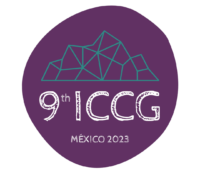The Indian state’s preoccupation with infrastructure, especially in recent decades, has found its best expression in the border regions, northeast India being one. A region sharing more than 90% of its borders with other nations (namely, China, Bhutan, Myanmar, and Bangladesh), northeast India, which is also part of the fragile Eastern Himalayan landscape, is undergoing an infrastructure spree – roads and bridges, dams and embankments being some of the more prominent infrastructures. The state of Arunachal Pradesh, for instance, has witnessed a number of large hydroelectric projects in recent years, including the Lower Subansiri Dam, which, once completed, will be the largest hydroelectric project in the country. A similar process is unfolding in the state of Assam, too. Indeed, the entire region has been declared by the Government of India as the “future powerhouse” of the country due to its rich water resources. Accordingly, a series of large dams have been proposed for the region. While some of these infrastructures may have accrued economic gains to the state, more of than not, they have also produced disasters and deepened social vulnerability. This paper critically engages with the question of infrastructure in northeast India with a special focus on Majuli river island in Assam.
Located in the middle of the Brahmaputra River and believed to the largest river island in the world, Majuli has undergone enormous transformations over the course of the 20th century due to the twin processes of flooding and riverbank erosion. From a landmass of roughly 1255 sq. km. at the turn of the century, the island is reduced to less than half its size today. This has resulted in large-scale displacement and outmigration of the local population as well as a great loss of biodiversity and traditional livelihoods. As I have discussed in detail elsewhere (Baruah 2022), the crises facing Majuli are largely rooted in the hydraulic infrastructures, chiefly the embankments, that the state has built over the years to control flood and erosion. This paper, however, focuses on a new infrastructure – a large bridge over the mighty Brahmaputra, currently at the initial stage of construction – and the potential risks that it poses to the island and the ecologies of the Brahmaputra floodplains more broadly. This roughly 7 km. long bridge will connect Majuli with the mainland on the southern bank of the river. With an estimated US$ 125 million budget, work on this project began in 2021 and the Assam government has pledged to complete it within four years.
While many on the island have welcomed and celebrated this project, it has also created great anxiety among others who believe that the bridge will change the fluvial dynamics of the river forever, thereby deepening vulnerability of the islanders. Their fear is not unfounded, as infrastructures of similar kind have, in the past, rendered downstream communities in the Brahmaputra Valley much more susceptible to flood and erosion (ibid). Many people also fear that once the island is connected with the mainland by a bridge, its identity as an island will be in question. Some others expressed concern about disturbance to Majuli’s cultural sanctity (Majuli is the hub of the satras, a medieval era Neo-Vaishnavite monastery) and peaceful natural environment once it is accessible to outsiders by road. Drawing on fieldwork conducted in riverside villages in Majuli, this paper presents a political ecological account of the role of infrastructure in the re-making of Majuli and, by extension, the Brahmaputra Valley as a whole. In doing so, the paper also engages with the social life of hydraulic infrastructures in Majuli.
Keywords: infrastructure, flood, riverbank erosion, Majuli, the Brahmaputra River, island.
Work cited:
Baruah, M. (2022). Slow Disaster: Political Ecology of Hazards and Everyday Life in the Brahmaputra Valley, Assam. Taylor & Francis.
